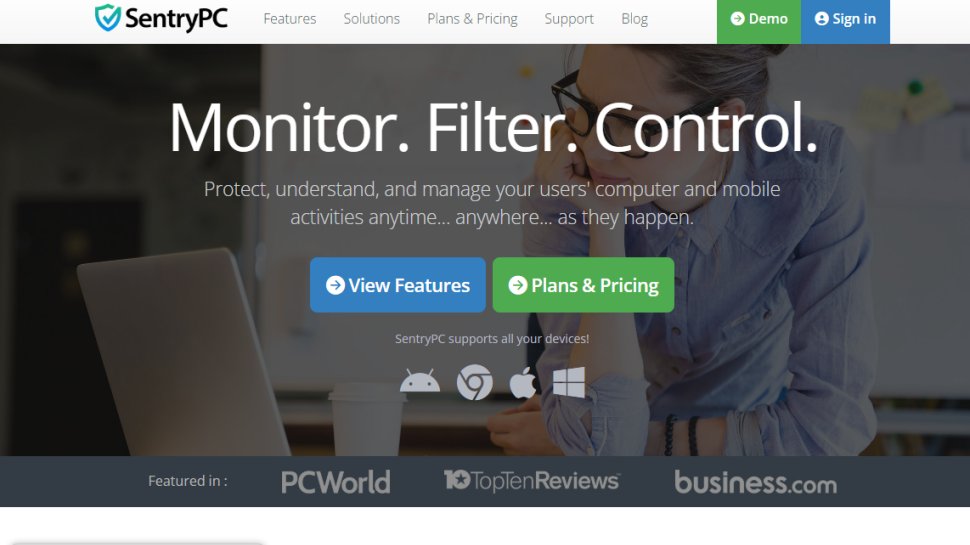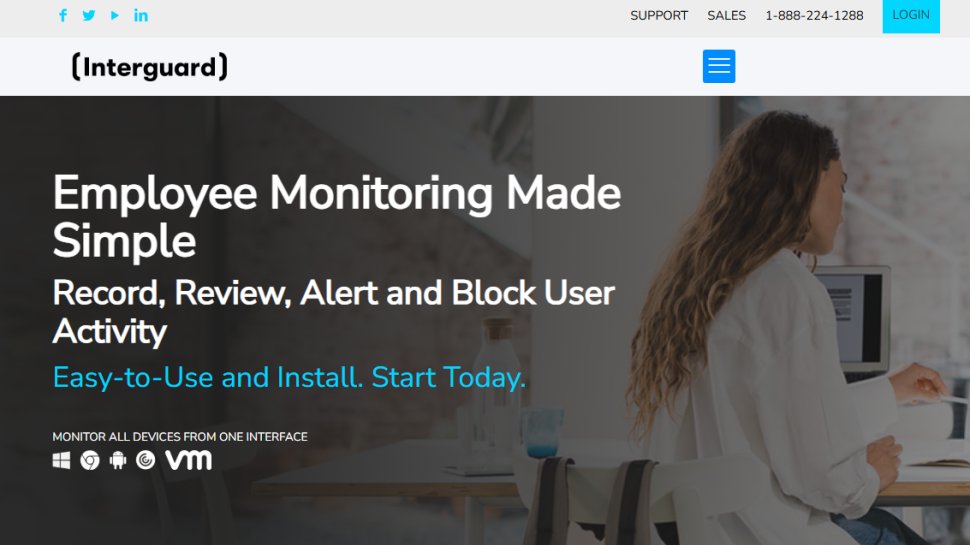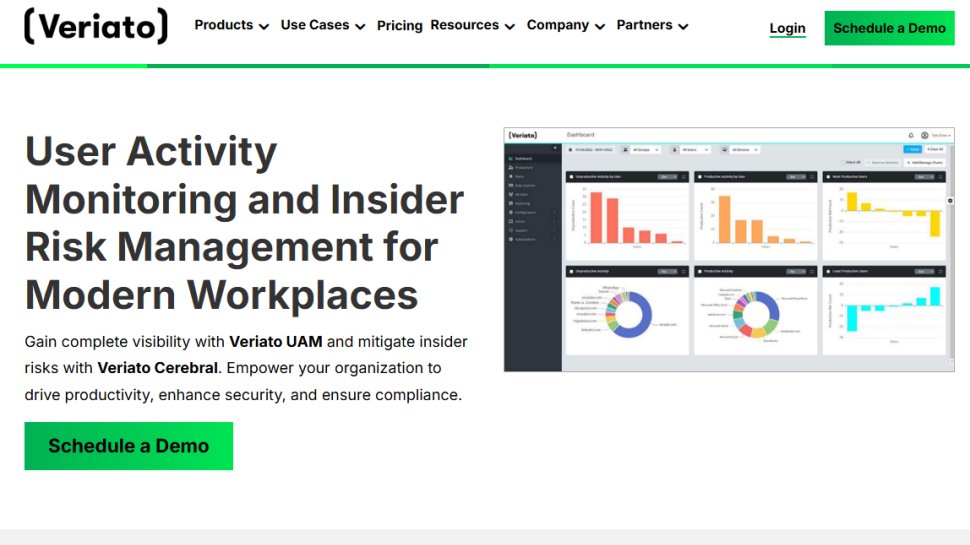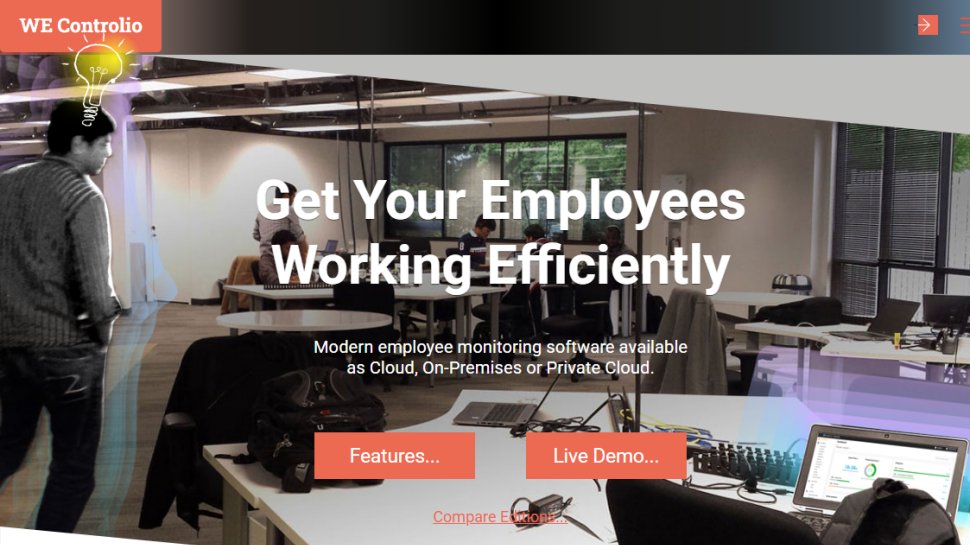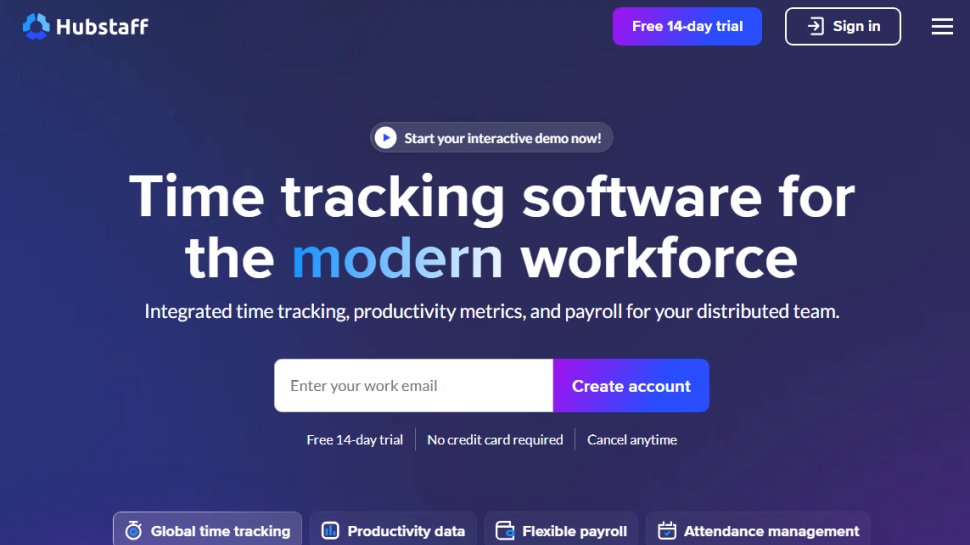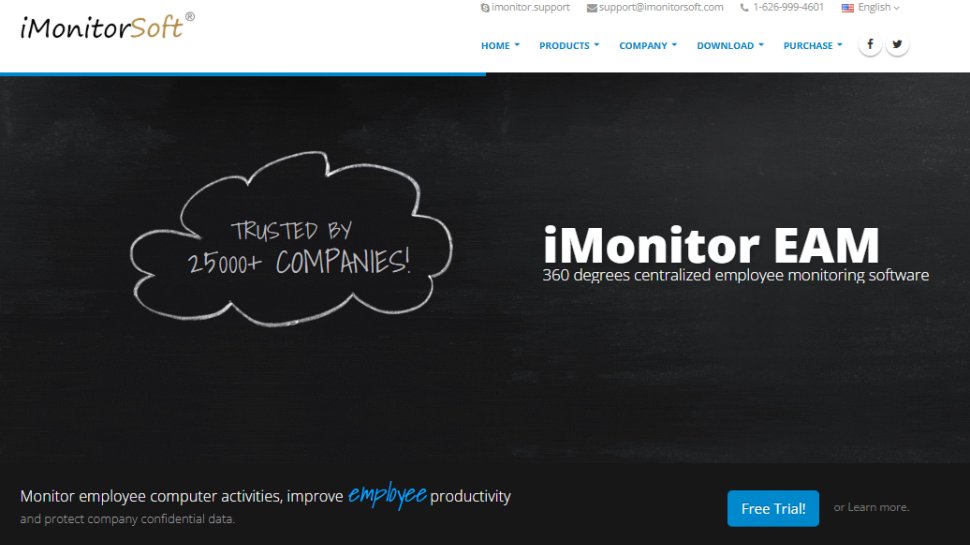Best employee monitoring software of 2025
Manage staff workstations and online security

We list the best employee monitoring software, to make it simple and easy to manage staff workstations and online security.
Now it is important to understand that the main purposes of employee monitoring tools are to provide employees with access to the correct tools and apps to help with their workload, and to minimize potential breaches and security vulnerabilities as a part of your organization’s broader cybersecurity strategy.
The best employee monitoring software should provide a similar overview to your environment as network monitoring tools, while providing similar security measures to an internet security suite.
To provide you with the best employee monitoring software, we have tested a range of solutions. Some dive deeper into employee activity to provide detailed feedback, while others provide a surface level overview. We explored the basic functionalities expected of an employee monitoring tool, while also testing their additional features and advanced settings and comparing these across price points, customer support, and ease of use.
Here are the best solutions currently available:
We've also listed the best identity management software.
The best employee monitoring software of 2025 in full:
Why you can trust TechRadar
Best employee monitoring software overall
Reasons to buy
Reasons to avoid
SentryPC is designed for a wide range of uses, from blocking access to websites to enhancing productivity and conducting investigations.
User activity can be tracked, alerts generated for web and application activity, keys are logged, and when activity is detected a screenshot of the event is captured as proof. What the PC version has exclusively is chat conversation logging, clipboard logging, file changes, USB drive detection and print job logging.
On Windows, the computer can also be remotely disabled, and a host of other features can be deactivated, such as file copying and even the desktop. The lack of all those features on the Mac makes it much less useful than the PC release.
If you exclusively use the PC, then SentryPC might is a low-cost way to monitor user activity and control personal use of the systems in work hours.
However, we’d be very cautious about using the keylogger and screen capture parts of this product or deploying it without informing staff and altering contracts to reflect these operational changes.
Read our full SentryPC review.
Best employee monitoring software for remote access
Reasons to buy
Reasons to avoid
InterGuard provides software that aims to record, alert, block, and act on user activity, in order to protect business data, maintain productivity, and ensure legal compliance for data and security protection. It does this by bringing together different aspects of user activity monitoring, data loss prevention, and incident response, into a single software management platform.
InterGuard automatically monitors all user activity and makes that data available for searches, alerts, and reports. Parameters are determined by company policies and protocols for data access, and unauthorized processes that might threaten data security can be blocked.
The company provides the example that only 3% of stolen or lost company laptops are ever recovered, but InterGuard can allow for the remote access of any missing or otherwise unaccounted for laptop so that files can be retrieved or deleted, or the laptop itself locked down so that unauthorized users cannot access it.
InterGuard is managed through a single control panel, and a demo is available to try out.
Read the full InterGuard review.
Best employee monitoring software for AI integration
Reasons to buy
Reasons to avoid
Veriato provides an integrated AI platform for monitoring user activity in order to reduce the chances of a data breach. It does this by following five main stages that involve monitoring, analysis, alerts, direct observation, and acting – or, as the company prefers to describe it: Watching, Analyzing, Alerting, Seeing, and Reacting.
The monitoring (Watching) stage involves tracking employee activity across the web, emails, chat apps, and monitoring which websites are visited, applications are used, and what documents are moved around or uploaded. This produces a record of session times along with activities, and can track a single employee via their login credentials across multiple platforms and devices.
Big data and AI is used to analyze patterns that might show a deviation from baseline behaviors, set by group or individually, and can additionally watch for outsiders trying to access the network or other digital assets using stolen credentials.
If any suspicious activity is detected, Cerebral Security will send an alert to the business security team. However, while the company advertises a false-positive rate of less than 2% and "low", some business owners might make a different judgement on that and whether it should be smaller, especially when the Cerebral Security product page itself declares that 71% of US workers are unhappy at work.
Once an alert is received, the security team can use a time capsule feature to check out a recording of the user's screen as it was used, to determine if the alert was triggered by an error, whether the user made an error, or whether malicious activity was discovered.
After that, the company can react accordingly, either dismissing the alert after being reviewed, or else in the more extreme cases, export any screen recordings if and as required to management, HR, security, in the event of disciplinary proceedings, or even to law enforcement if legal proceedings need to be taken.
Read our full Veriato review.
Best employee monitoring software for stealth monitoring
Reasons to buy
Reasons to avoid
Work Examiner is broken down into three main purposes: web usage control, surveillance, and work time tracking. The platform provides data on how an organization's web traffic is distributed between users, computers, user groups, departments, sites and website categories. It can be viewed by days, dates and hours.
Detailed web access reports are provided and, as with other platforms, it's possible to filter what websites employees can access. Users can receive notifications when specified websites are accessed and employees can be issued a customizable message when they access specified sites.
The surveillance functionalities in Work Examiner allow users to see screenshots of what a user is viewing in real-time, and there's the option to capture screenshots at regular intervals and then play them back like a movie. All emails can be captured and saved and it's possible to filter emails by keyword. Activity on instant messaging applications can also be recorded.
Work time tracking allows users to view what employees are spending their time doing, such as which applications they are using the most, what websites they are visiting and how much time they spend on non-work activities. Employee attendance can be tracked, including when they arrive at their computer and leave, specific applications can be blocked for specified employees, and it's possible to view which employees are working at the current time.
Read our full Work Examiner review.
Best employee monitoring software for productivity
Reasons to buy
Reasons to avoid
While a number of our featured companies focus on the security aspect of employee monitoring, Hubstaff instead puts the focus on productivity. The platform encompasses a number of features, such as online timesheets, time tracking, scheduling, tracking, as well as reporting.
Timesheets combine tracking, billing, and payroll into a single online center that can be accessed from any mobile device. This has the advantage that employees know exactly what they are due in payments, and managers can easily keep an eye on budgets as well as staffing levels.
There's also a GPS feature available so that fleet assets can be tracked, as well as the number of hours driven, making it easier to manage projects and staff over multiple sites and locations.
Project management is included, and you can also see work in progress through a series of snapshots, which can be customized to run at specific time intervals or simply switched off altogether. Integrations are available as well, making it easy to run Hubstaff alongside other staff tools.
Overall, Hubstaff is a powerful but modern solution that offers a range of plans with increasingly comprehensive features up to multisite tracking and fleet tracking.
Read our full Hubstaff review.
Best employee monitoring software for real-time alerts
Reasons to buy
Reasons to avoid
iMonitorSoft claims that its iMonitor Employee Activity Monitor (EAM) is aimed at helping organizations improve employee productivity and protect corporate confidential information.
iMonitor EAM allows organizations to monitor up to 1000 computers from one central server and group computers by, for example, department or location. The platform can monitor a host of activities, including keystrokes, clipboard activities, screenshots taken, document activities (such as copying, moving, pasting, deleting, renaming and creating), printing, emails, online storage usage, websites visited, online searches, downloads, application usage and time, removable storage usage, network traffic and system events.
Amongst iMontor's additional features are the ability to run up to ten different remote desktops at the same time to monitor employees' work in real-time, and the ability to set up real-time alerts for specific activities. For example, notifications can be sent to a user when an employee types specific keywords or if, for example, they connect a removable storage device to their computer.
Removable storage can be blocked from working and access to websites can be filtered. It is also possible to take control of a computer remotely and open a computer's webcam to view its surroundings.
Read the full iMontior EAM review.
We've also featured the best employee scheduling software.
Best employee monitoring software FAQs
How to choose the best employee monitoring software for you?
When deciding which employee monitoring software to download and use, first consider what your actual needs are, as different platforms can focus on different aspects of monitoring. For example, some are primarily security platforms to prevent cybersecurity attacks, while others aim to improve productivity by analyzing existing metrics and suggesting improvements.
Additionally, budget options can sometimes prove limited when it comes to the variety of tools available, while higher-end software can really cater for every need, so do ensure you have a good idea of which features you think you may require.
How we tested the best employee monitoring software
To test for the best employee monitoring software we first set up an account with the relevant software platform, whether as a download or as an online service. We then tested the service to see how the software could be used for different purposes and in different situations.
The aim was to push each employee monitoring software platform to see how useful its basic tools were and also how easy it was to get to grips with any more advanced tools.
We assessed how easy the setup was, the interface, security, and the reporting tools. We also checked how prompt their customer support was, their documentation, and their pricing plans, among other aspects.
Read how we test, rate, and review products on TechRadar.
Get in touch
- Want to find out about commercial or marketing opportunities? Click here
- Out of date info, errors, complaints or broken links? Give us a nudge
- Got a suggestion for a product or service provider? Message us directly
- You've reached the end of the page. Jump back up to the top ^
Sign up to the TechRadar Pro newsletter to get all the top news, opinion, features and guidance your business needs to succeed!

Benedict has been with TechRadar Pro for over two years, and has specialized in writing about cybersecurity, threat intelligence, and B2B security solutions. His coverage explores the critical areas of national security, including state-sponsored threat actors, APT groups, critical infrastructure, and social engineering.
Benedict holds an MA (Distinction) in Security, Intelligence, and Diplomacy from the Centre for Security and Intelligence Studies at the University of Buckingham, providing him with a strong academic foundation for his reporting on geopolitics, threat intelligence, and cyber-warfare.
Prior to his postgraduate studies, Benedict earned a BA in Politics with Journalism, providing him with the skills to translate complex political and security issues into comprehensible copy.
